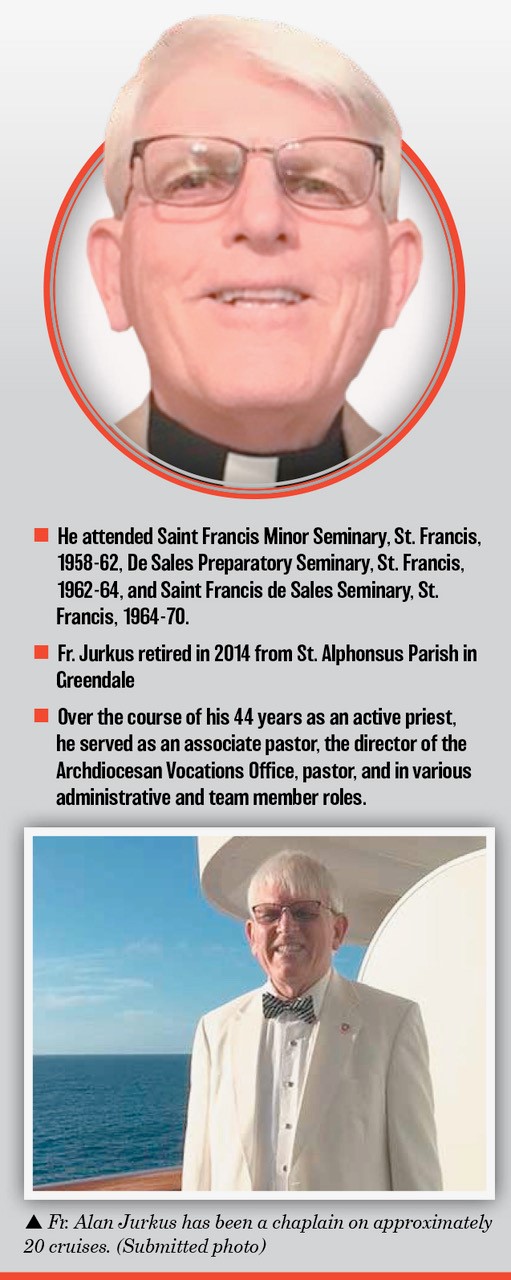Give Us Shepherds
When did you begin to discern the priesthood?
Second grade. Somehow, I got in my head that I wanted to be a lawyer, a pilot or a priest. That was the first time it hit my head, and then again on and off through the years I thought about it. It’s interesting, because years later when I was Vocations Director for the Archdiocese, I came across one piece of research that said that the people who are happiest in their profession are the people who are doing what they wanted to do when they were in second and third grade. For me, that was true.
Is that something you asked priests when you were Vocations Director?
In those days, my team and I covered every parish in the diocese and we’d ask them that. It was amazing to hear that a good half of them would have answered “priest” in the second or third grade.
Where was your first assignment?
The first assignment I had was in Plymouth, and I can remember getting the letter of the appointment two or three days before ordination. One of the other seminarians asked where I was going. I told him, and he said, “Oh, I thought you had a Chevrolet.” No one quite knew where Plymouth was. They say that your first assignment is your first love, and that was true for me.
What made that assignment such a memorable one for you?
I had a great priest, Fr. Richard Baer, who was pastor. I couldn’t have asked for anyone better. He said shortly after I got there, “Don’t be afraid to try stuff.” Those were very turbulent years; you had an older generation that was in some cases resistant of the Vatican Council and he said, “If it works, we both learn, and if it doesn’t work, we both learn.” He was a wonderful priest. Unfortunately, he died preaching during a Saturday night Mass. I was listening from the parish house on the intercom and his last words were, “If the Lord calls, you must say ‘I’m ready, take me,’ no questions asked.”
How did knowing him have an impact on your ministry as a priest?
He was always one of several models I had in my head for who I wanted to be. When we had his visitation, I remember as clearly as if it happened today, all the different kinds of people who came in to pay their respects. It was phenomenal. A group of bikers came in and I remember being hesitant about it but two of them fell to their knees beside his casket and started praying. I remember thinking that this was a man who touched so many lives in so many ways.
What do you love most about being a priest?
Preaching. I always made it a priority to ask myself “so what?” After I’d put it in my head, I’d ask myself what it said and meant to anyone who’d hear it and to me, as the one who was preaching it. People come up to me even today and tell me that what I preached spoke to them, and that’s so important. I also loved working with couples who were preparing for marriage. You see their enthusiasm and optimism.
Have you stayed in touch with any of those couples?
I stay in touch with 15-20 of the couples that I counseled, and I’ve kind of journeyed through life with them. One of the first couples I married, the husband died about five years ago, but the wife still writes me a long letter every year. There are people who I’ve stayed in touch with through cancer and different life difficulties.
What do you hope you’re remembered for?
Well I’ll tell you what people do remember, and it’s not necessarily what I’d say that I want to be remembered for but it makes me smile. At the end of every Mass, even now when I give a homily, I’ll tell a story. I want people to leave with a smile on their face. It’s incredible how many people remember that. I would hope that when I’m through with Mass that people leave with a little more hope and a little more joy.
How do you spend your days now that you’re retired?
Pre-COVID days, I volunteered to be a chaplain on cruise ships. It’s a hard job, but someone has to do it. I really love that. I’ve done upwards of 20 when they were still running. I found that to be incredibly rewarding: the people I’ve met and the stories I’ve heard.
You also recently took a big road trip didn’t you?
Last summer, I drove Route 66 all the way to Santa Monica Pier. It took a month, and I saw so much, it’d be quicker to tell you what I didn’t see. I saw petrified forests, old diners, abandoned towns, groups of people in Corvettes doing the route and I stayed at vintage motels. It was wonderful.

